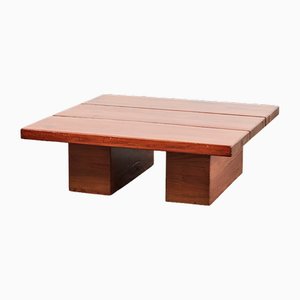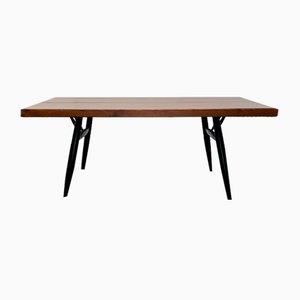
Modernist designer Ilmari Tapiovaara was born in Hämeenlinna, Finland in 1914. He studied interior design and industrial design at the Institute of Industrial Arts in Helsinki, graduating in 1937. While still a student, he worked for Alvar Aalto in Artek’s London Office (1935-36). After school, Tapiovaara worked as an assistant for six months at modernist architect Le Corbusier's office in Paris. The following year, he became artistic director of Asko Oy, the largest furniture manufacturer in Finland at the time; he remained there for three years. From 1941-1951, he was artistic and commercial director for the cabinetwork factory at Keravan Puuteollisuus. Around that period, he and his wife, Annikki, began taking on interior design projects for clients such as the Domus Academy (1946-47) and the Tech Student Village (1951).
The pair opened their Helsinki office around 1950, focusing on furniture and industrial design commissions for numerous companies. While Tapiovaara is best known for interiors and furniture, he also designed lighting, glass, textiles (often in collaboration with his wife), cutlery, and radio and stereo components through the mid 1970s.
Tapiovaara was a great admirer of Finnish architect-designer Alvar Aalto, and his work was decidedly function-driven. He also had a strong sense of social responsibility; set against the backdrop of Finland’s postwar era, Tapiovaara took a democratic approach to design, believing everyone should have access to affordable, good design. For example, the stackable, birch plywood Domus chair (1946)—originally designed for the Domus Academy and arguably Tapiovaara’s most famous piece—was designed such that several chairs easily fit into small crates for efficient export (by the millions) to the United States. Additionally, he designed multiple “knock-down” pieces, which could be taken apart for more effective, lower cost shipping. During the late 1950s, he traveled to Paraguay to design furniture on behalf of the UN development program; he did a similar project in Mauritius during the mid-1970s. Tapiovaara also taught: He was employed as a teacher at the design school of the Illinois Institute of Technology from 1952-53, and he taught interior and industrial design at the Institute of Industrial Art in the 1950s and later from the 1970s to the mid-1980s.
Tapiovaara exhibited extensively, and earned several honors, including: gold medals for his chairs at the Milan Triennials in 1951, 1954, 1957, and 1960; a Good Design award in Chicago in 1950; the Finnish State Design award in 1971; a prize form the Finnish Culture Foundation in 1986; and the Furniture Prize of the SIO Interior Architects’ Association of Finland in 1990.
He passed away in 1999. Notably, in 2014, the Designmuseo in Helsinki hosted a retrospective of his work, including furniture and drawings, on the centennial of his birth.


